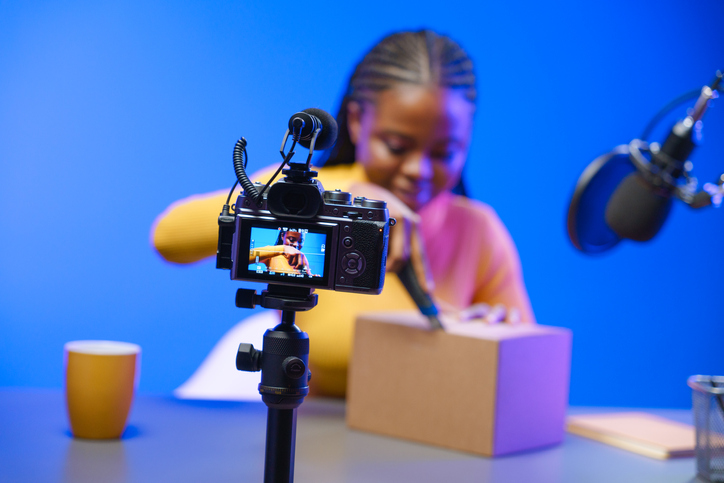If you watch Shark Tank enough, you’ll remember the fastest “I’m out” in the show’s history. It was a pitch about a new movie production called “Track Days”. In fact, all the sharks were out – it seems no one wanted to invest in an indie movie. Well, in 2014, I was selling a similar product. I was selling an animation movie to distributors, sponsors and investors. Unlike those guys, my team and I were prepared. We had a script, the movie was 60% completed, we had a breath-taking trailer, we even had great names from Hollywood on board, yet that didn’t help me because I simply couldn’t get a meeting with anyone. All we needed is to get through that door.
So, we took some of our budget and decided to spend it on marketing our own trailer in hopes to get past the gatekeepers and meet the investors. We knew that we needed to create a buzz on the internet using social media stars and influencers.
In summary, after the campaign, we raised more than we aimed for and I must give credit to the social media influencers we used. That’s why I’m a believer and I’m not the only one. There are 21.7 million sponsored posts created on Instagram every day! Big brands such as Chobani, Nike, Nordstrom, Amazon, and Airbnb are investing in this method of marketing.
Tip! Look at your competition, maybe they’re doing it already. Go to their Instagram page, then tagged images to find out.
It’s important to understand how it works in order to achieve the results you’re looking for. I have created this simple guide that will help you plan your campaign and ask the right questions!
- Know Your Audience.
Of course! This is step 1 in every marketing campaign. Specify your audience age groups, gender, locations, language, interests or keywords you can think of to match your brand. For example, if you’re selling sunglasses relevant keywords would be: Travel, Beach, Sun, Fashion, Cruises + Sunglasses.
- No Buts or Bots About it.
We have all heard about the term fake followers. You can buy 5000 followers for less than $20. At first, we used to eyeball the influencers’ Instagram -if the number of followers is way higher than the amount of likes or comments they get then we’d know they have fake followers. Nowadays, influencers can also buy fake comments and likes too. I can’t tell you how many agencies and brands fall victims for influencers who keep “faking it”. That’s why I recommend using influencer marketing tools that will help you identify the influencers with fake followers. These tools can be a very expensive investment so hire an agency that utilizes such tools.
Tip! Right questions to ask an agency: What are the tools you use to manage your influencer marketing campaigns?
- Don’t judge the book by its cover.
So, you know your audience and now you’re looking at different hashtags on Instagram to find the right influencers in your area. Then you choose an influencer that matches your audience demographics (similar age, location, interests and gender), right? WRONG!
Just because an influencer lives in NY, doesn’t mean their followers live in the same country. To get the most ROI, your focus should be on the followers not the influencer. There are over 1.6 million influencers out there, to vet them all wisely, you need to analyze their followers.
Tip! Right question to ask your agency: What’s your influencer vetting process?
- Price is Right!
There’s no a fixed price on influencers. Each one is valued differently. I personally look at their engagement level more than followers. You’ll be surprised to know that some mid-influencers with 30k followers perform better than influencers with 200k followers. There are tools that give you suggested costs to help negotiate with the influencers. When an influencer asks me for more, I simply download their performance report and share it with them to match the suggested price on the tool I use. It helps me ensure the budget is spent correctly.
- Brief the influencers.
It’s best practice to send the influencer a comprehensive brief about your campaign. Influencers like to be creative but they also need some guidelines. Send the influencers a brief that includes the following:
- About your company: short brief about your history.
- About your product: what it is used for and why.
- Photo instructions: what you’d like them highlight in the photos such as logos or packages.
- Post instructions: Add location, tag photos.
- Draft and Approval: Who to send the draft to and who approves it.
- Hashtags: Your brand’s hashtags.
- Links: Any links you want the influencer to add in their bio link (optional).
- Time and date to post.
Tip: Make sure there are some gaps between each influencer posts to separate their attributions.
- Track Attributions.
Instagram has made it very difficult to track attributions. However, the best way to track your influencers’ performance is by giving them unique links that you can track. Bitly and the influencer marketing tools I mentioned can help track those links. Another way you can track results is by asking the influencer to send you a screenshot of the sponsored post insights, then manually add them to your KPI report.
Tip! Ask your agency to provide you with a KPI report every month.
- Follow Best Practices.
FTC has recently been demanding all influencers and celebrities to clearly disclose the “material connection” between an endorser and an advertiser – in other words, a connection that might affect the weight or credibility that consumers give the endorsement – that connection should be clearly and conspicuously disclosed, unless it is already clear from the context of the communication. Brands that don’t follow the guidelines will be fined a large sum of money. Influencers must use hashtags such as #ad or #sponsored or mark the post as “paid partnership”.

